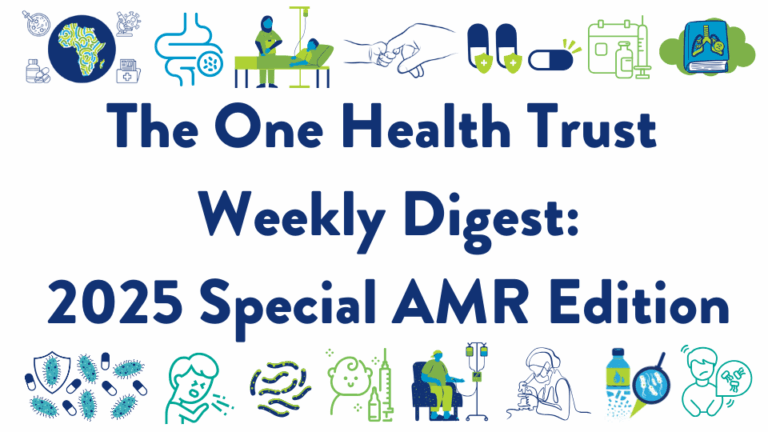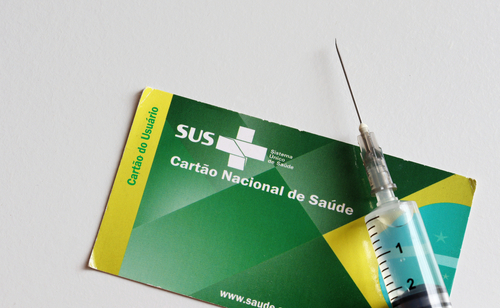February 15, 2019

Investing in effective antibiotics critical to preventing deaths during pandemic influenza outbreaks. Researchers at CDDEP, the University of Strathclyde, and Wageningen University developed a mathematical framework to estimate the value of investing in developing and conserving an antibiotic to mitigate the burden of bacterial infections caused by resistant Staphylococcus aureus during a pandemic influenza outbreak. The model, which is based on UK preparedness plan assumptions, found that the value of withholding an effective novel oral antibiotic can be positive and significant unless the pandemic is mild and causes few secondary infections with the resistant strain or if most patients can be treated intravenously. At baseline, the value of an effective antibiotic against Staph infections, as an insurance policy against future pandemics, is between $3 and 4 billion, researchers found. [Health Economics, CDDEP Press Release]
DRC Ebola outbreak kills more than 500. In the Democratic Republic of the Congo (DRC), the ongoing Ebola outbreak has resulted in 800 confirmed cases, 178 suspected cases, and 502 deaths, according to the country’s Ministry of Health. [DRC MOH]
UK NICE publishes guidance on antibiotic prescribing for acute cough. The UK National Institute for Health and Care Excellence (NICE) released an antimicrobial prescribing strategy for acute cough associated with upper respiratory tract infection or acute bronchitis in adult and pediatric patients. The guidelines aim to limit antibiotic use and reduce antibiotic resistance. According to the guidelines; health care providers should only consider an antibiotic when patients have a higher risk of complications and should immediately prescribe an antibiotic if the patient is systemically very unwell during a face-to-face examination. They also provide recommendations for first- and alternative antibiotic choices and dosage and treatment length. [UK NICE]
Mortality and treatment adequacy among TB patients around the world. In a multi-center cohort study, researchers assessed mortality and treatment adequacy for 634 patients residing in Côte d’Ivoire, Democratic Republic of the Congo, Kenya, Nigeria, South Africa, Peru, and Thailand who were diagnosed with Tuberculosis (TB) between 2013 and 2016. Drug susceptibility testing of Mycobacterium tuberculosis isolates revealed that 62 percent of strains were pan-susceptible, 7 percent were resistant to only one antibiotic, 26 percent were multidrug-resistant, and 5 percent were pre-extensively or extensively drug resistant. Overall, 69 patients died, and mortality ranged from 6 percent among patients with pan-susceptible TB, who were treated according to World Health Organization guidelines, to 57 percent for patients with resistant TB who were under-treated. [The Lancet Infectious Diseases]
FDA accepts New Drug Application from Merck for two antibacterial combination therapies for Gram-negative infections. The US Food and Drug Administration (FDA) accepted a New Drug Application (NDA) for Merck’s relebactam and imipenem/cilastatin combination therapy. These are intended to treat complicated urinary tract and intra-abdominal infections caused by Gram-negative bacteria in adults with limited or no alternative therapies available. Relebactam is an intravenous, class A and C beta-lactamase inhibitor. The FDA also accepted an NDA for a ceftolozane and tazobactam combination therapy, which is intended to treat adult patients with hospital-acquired pneumonia, including ventilator-associated pneumonia caused by certain susceptible Gram-negative microorganisms. [Merck Press Release]
Preclinical results promising for Mayaro virus vaccine. A novel, synthetic DNA envelope vaccine induced potent immune responses and successfully protected mice against Mayaro virus, an emerging mosquito-transmitted pathogen that causes acute febrile illness, rash, headaches, and, in some cases, persistent joint pain. Four- to six-week old mice received two doses of the vaccine at two-week intervals. The vaccine elicited strong humoral and cellular responses, and all mice survived post-vaccination exposure to Mayaro virus. Transfer of immune sera from the blood of vaccinated mice to susceptible mice protected both vaccinated and non-vaccinated animals from illness when subsequently exposed to Mayaro virus. [PLOS Neglected Tropical Diseases]
Scaling up prevention and treatment towards the elimination of hepatitis C. Researchers assessed the global impact of scaling up interventions to reduce hepatitis C virus (HCV) transmission and to improve access to screening and treatment using a global, dynamic transmission model for hepatitis C virus (HCV). The model included demographic and epidemiological data including HCV prevalence and mortality, number of people who inject drugs (PWID), and current coverage of treatment and prevention programs for 190 countries. Interventions that reduce HCV transmission risk among non-PWID by 80 percent and increase harm reduction services to 40 percent of PWID could avert 14.1 million new HCV infections by 2030, according to the model. A comprehensive package of prevention, screening, and treatment interventions could avert 15.1 million new infections and 1.5 million deaths from cirrhosis and liver cancer. [The Lancet]
Educational intervention in rural China reduces short- and long-term antibiotic prescribing for pediatric upper respiratory infections. An educational intervention that involved clinical antibiotic prescribing guidelines, monthly prescribing review meetings, doctor–patient communication skills training, and education materials for caregivers reduced antibiotic prescribing for pediatric upper respiratory tract infections (URTI) in the primary health care setting in rural China. In an unblinded cluster-randomized controlled trial in 25 health facilities across two counties, the antibiotic prescribing rate (APR) for children aged 2 to14 years with a primary diagnosis of a URTI, was 84 percent at baseline, 37 percent at 6 months, and 54 percent at 18 months in intervention facilities. In control facilities, the APR was 76 percent at baseline, 77 percent at 6 months, and 75 percent at 18 months. [PLOS Medicine]
Omadacycline noninferior to moxifloxacin to treat community-acquired bacterial pneumonia in adults. In a double-blind trial, 386 patients with community-acquired bacterial pneumonia received omadacycline, an experimental aminomethylcycline antibiotic agent, administered intravenously or orally, and 388 patients received moxifloxacin. Early clinical response rates were 81.1 percent for omadacycline and 82.7 percent for moxifloxacin, and clinical response at post-treatment evaluation were 87.6 percent and 85.1 percent, demonstrating that omadacycline was noninferior to moxifloxacin. Rates of adverse events were 41.1 percent among those receiving omadacycline and 48.5 percent among those in the moxifloxacin group. [NEJM]
High level of multidrug-resistant Escherichia coli in young dairy calves in southern Vietnam. Fecal samples were obtained from 84 calves from 41 dairy farms in southern Vietnam. Samples were collected at time of birth and at two weeks of age. Escherichia coli strains were isolated from 144 of the 168 fecal samples; 53 percent of isolates were resistant to at least three antimicrobials most commonly tetracycline, sulfamethoxazole, ampicillin, trimethoprim, and ciprofloxacin. [Tropical Animal Health and Production]
Photo Credit: Shutterstock











